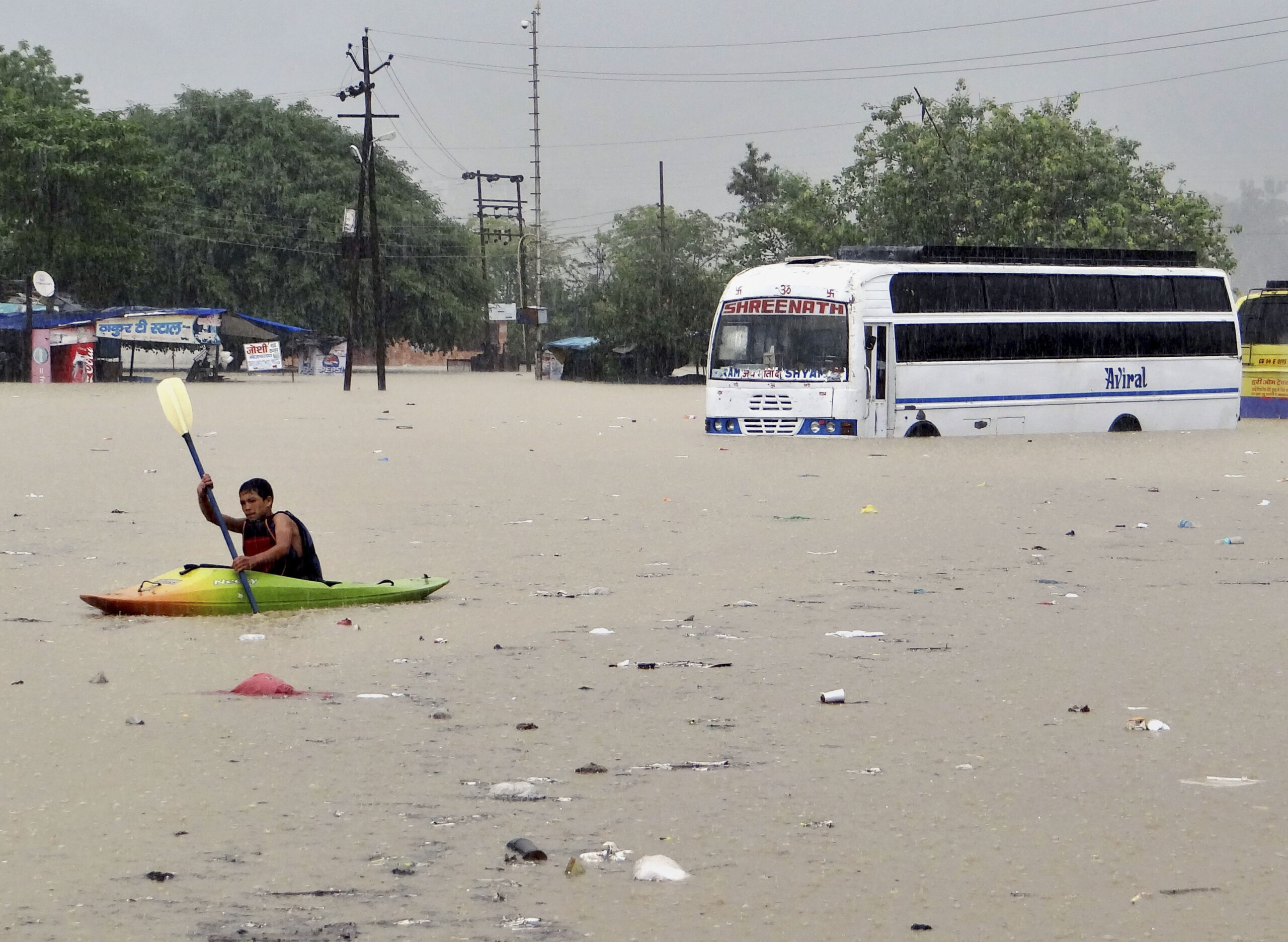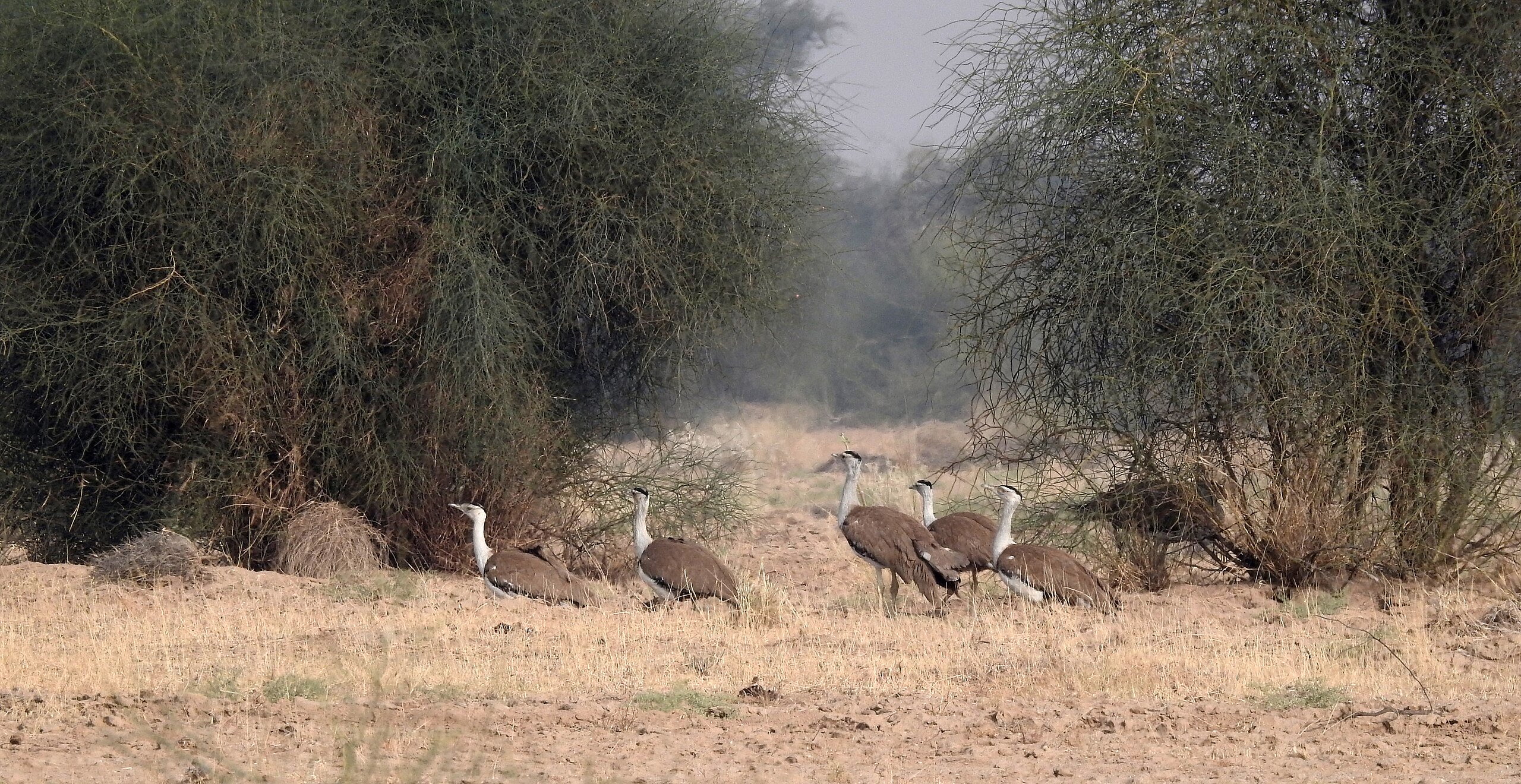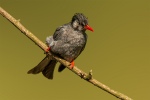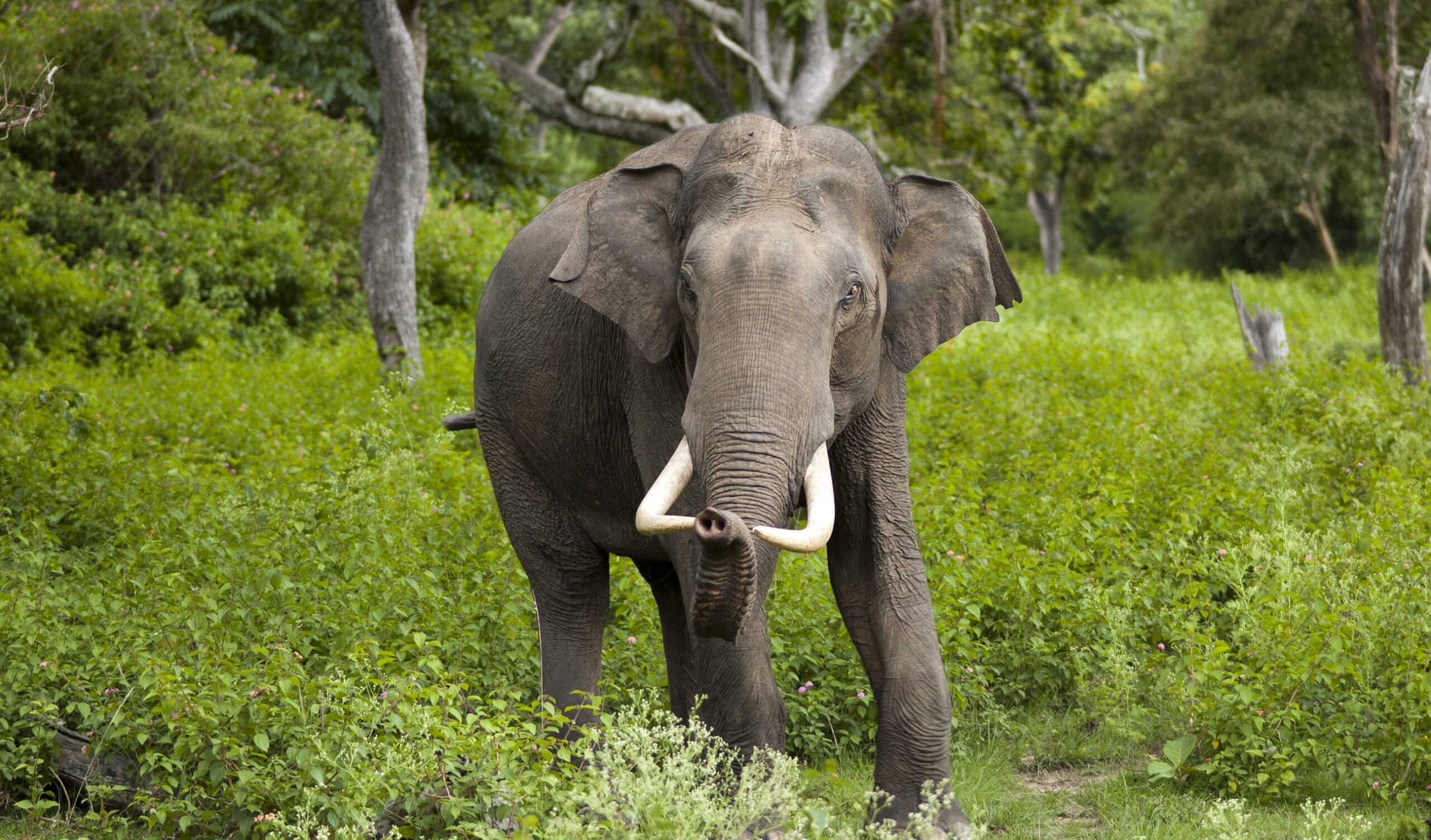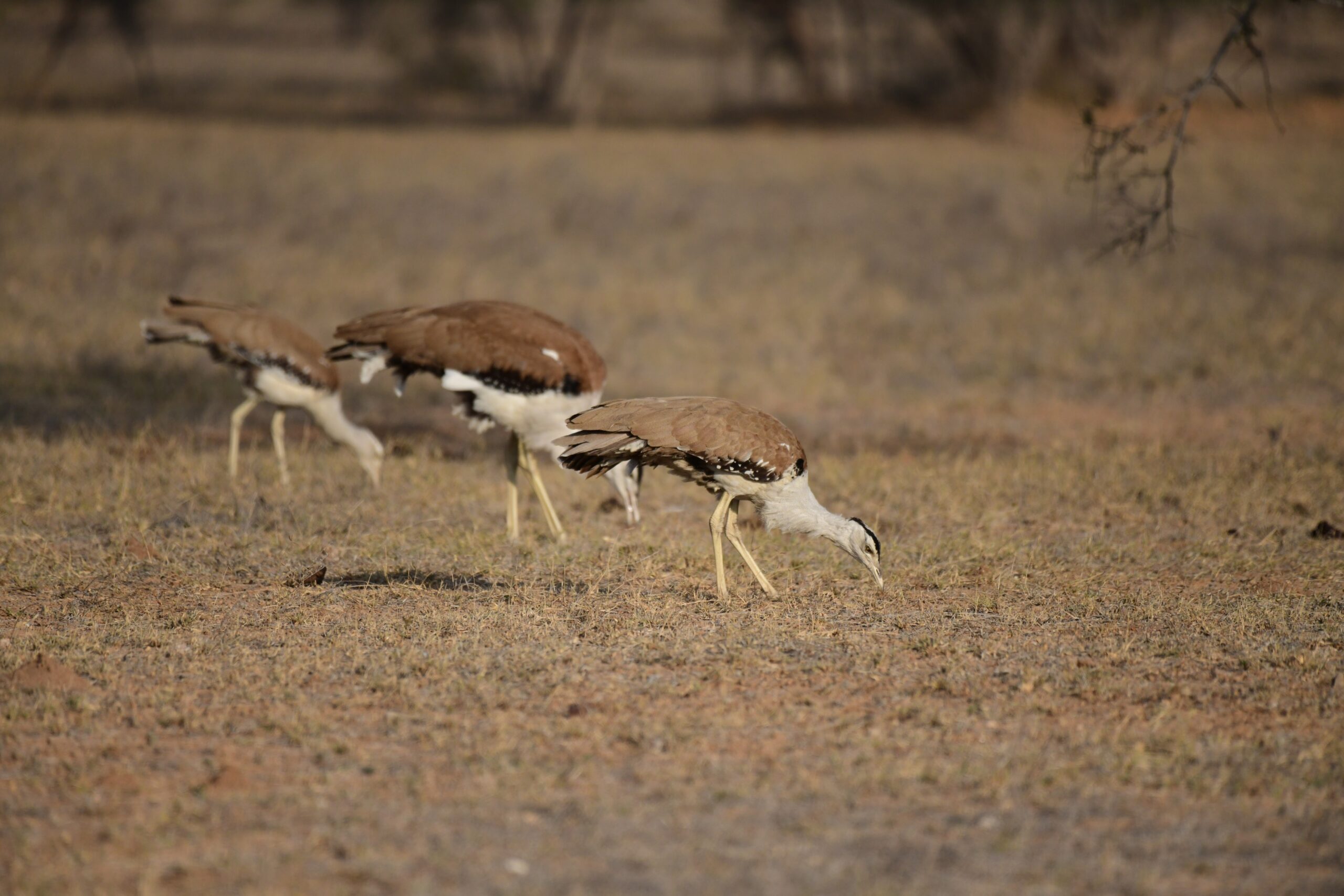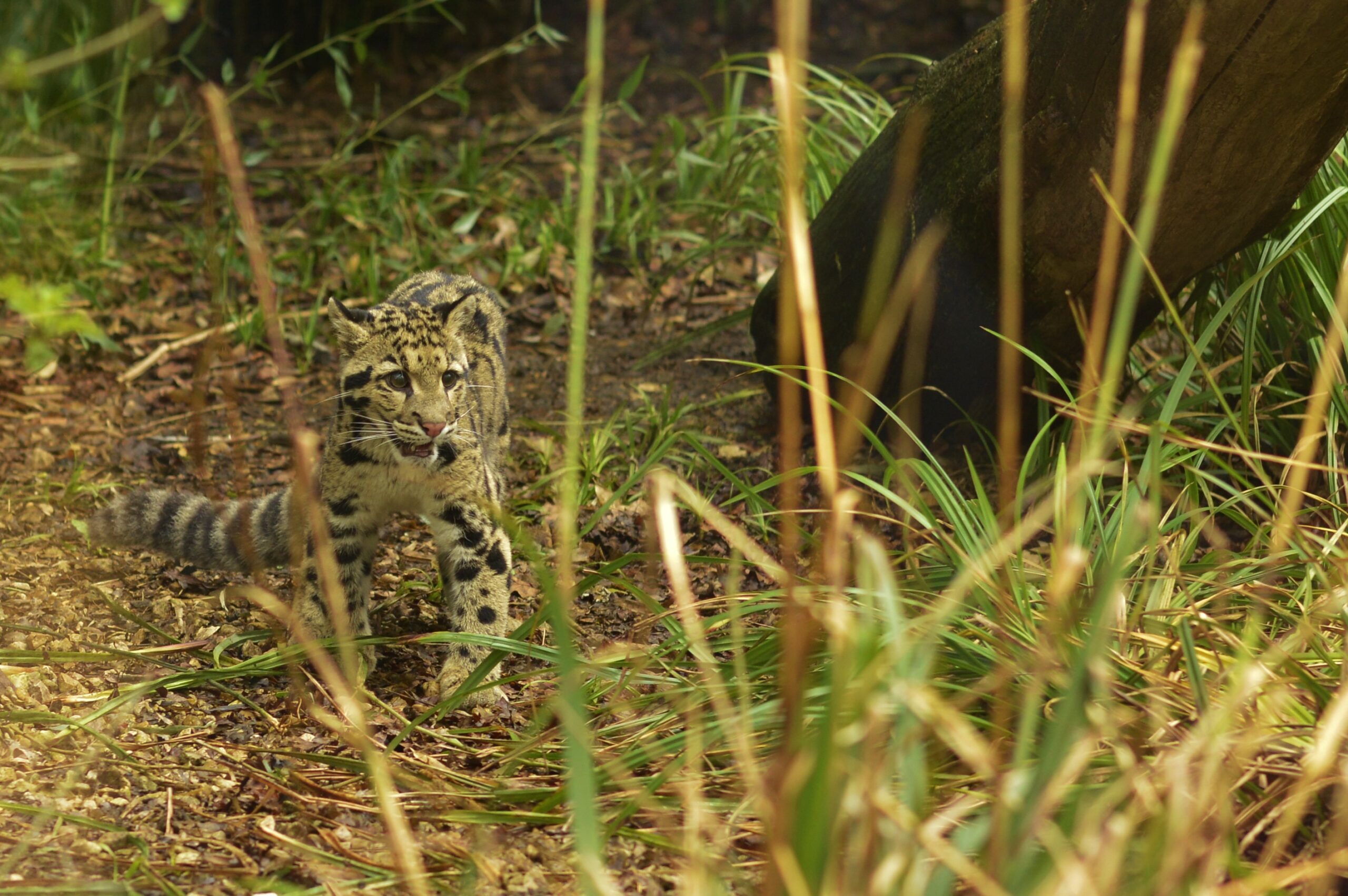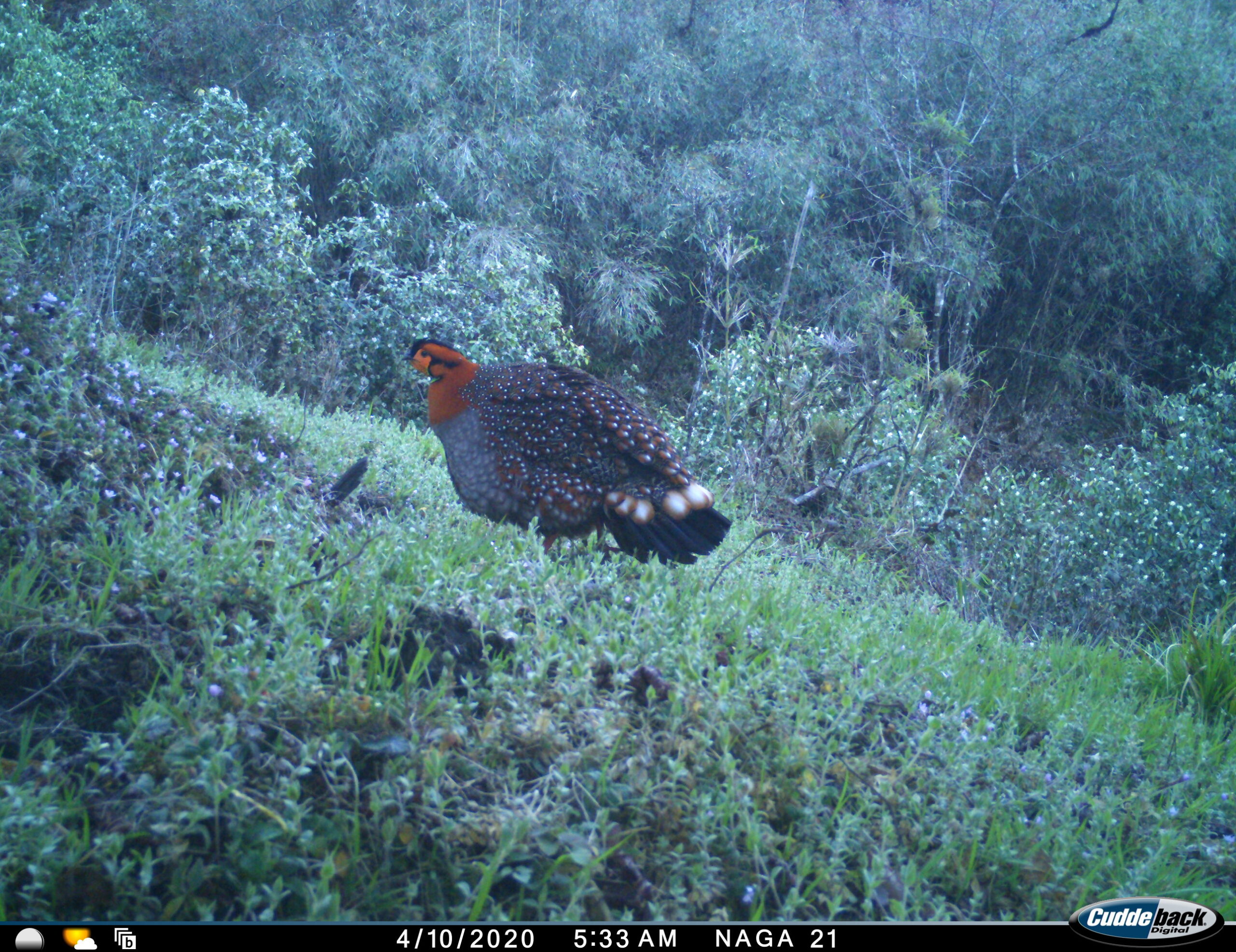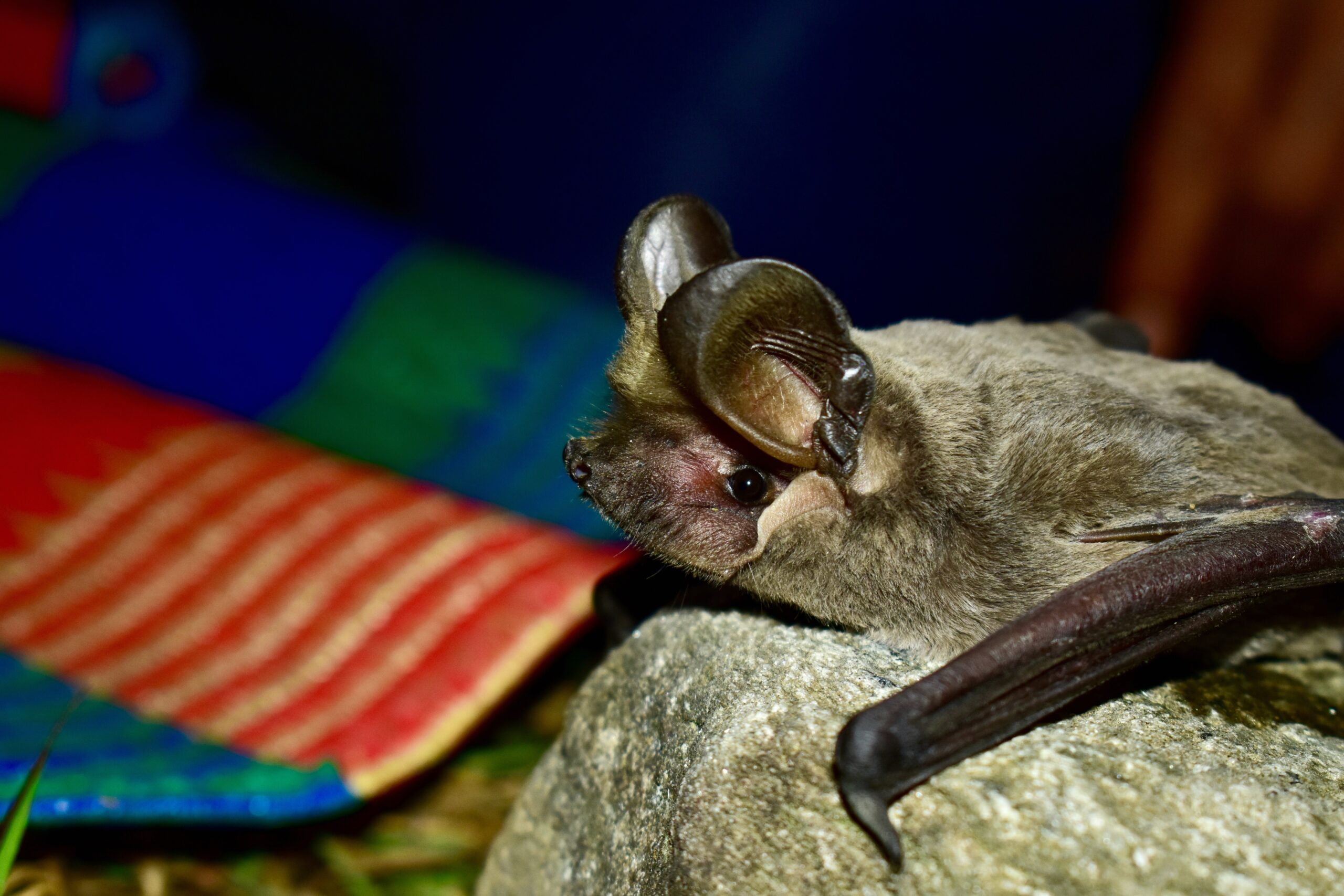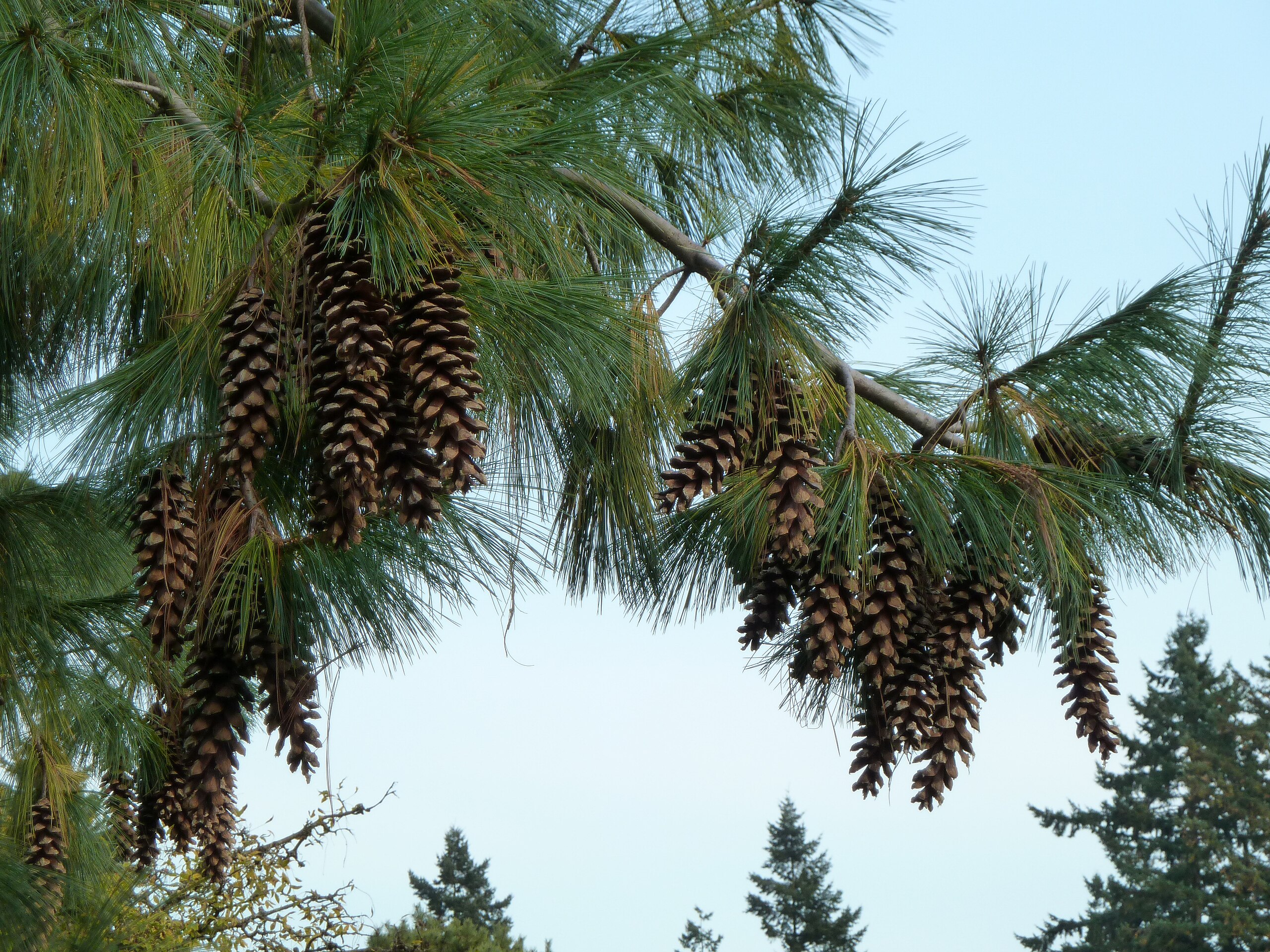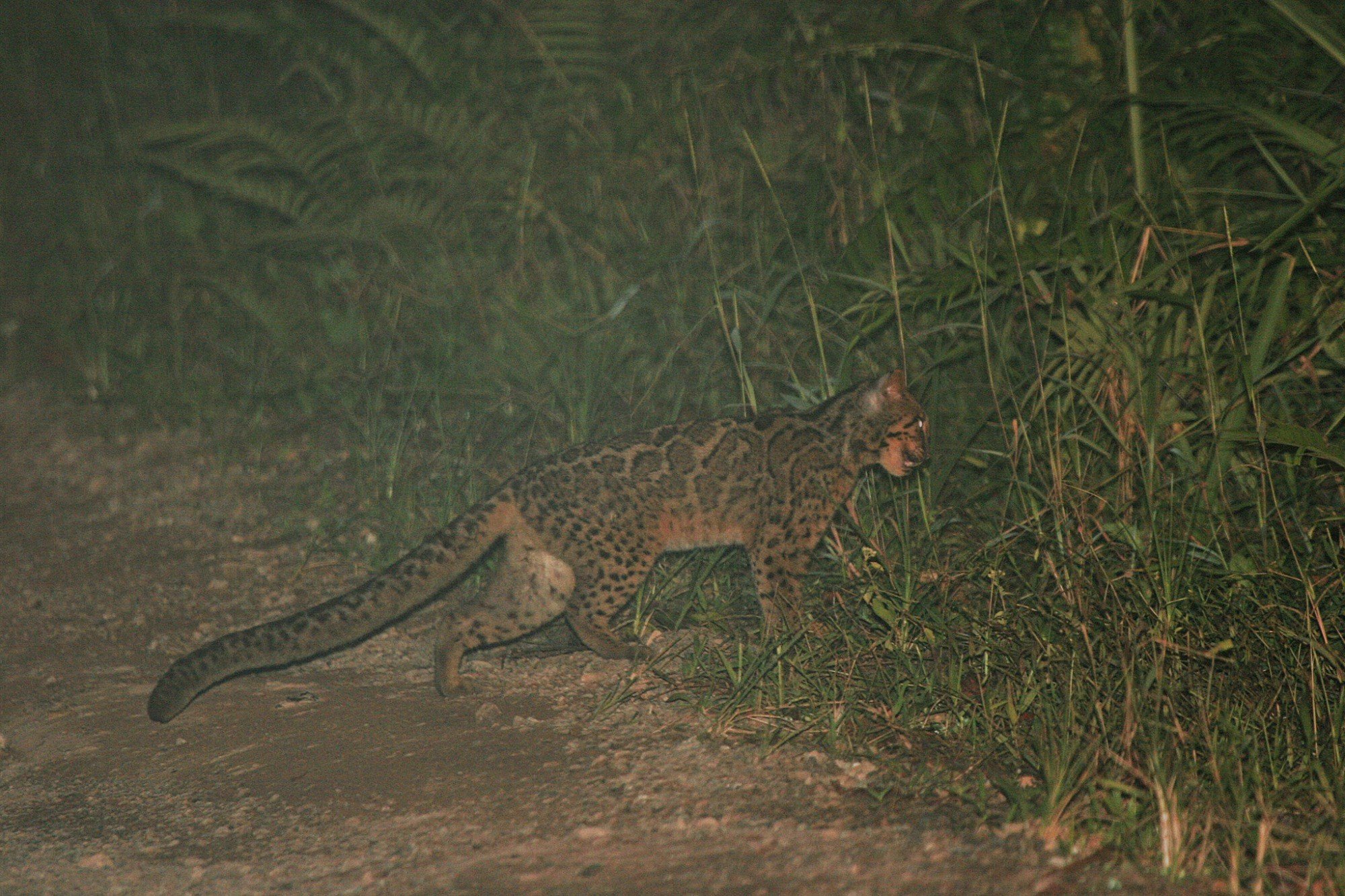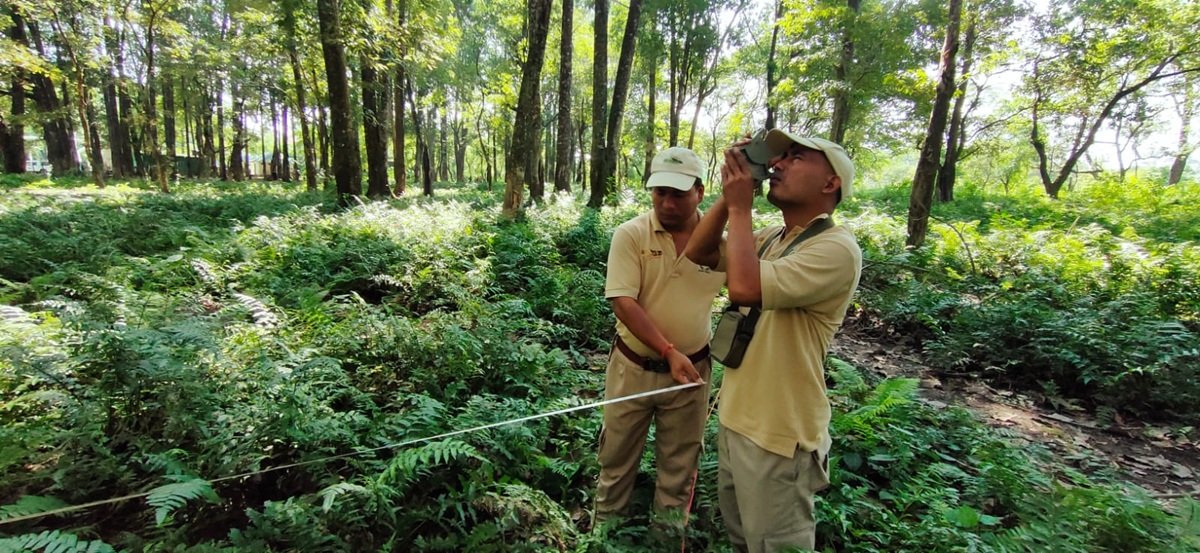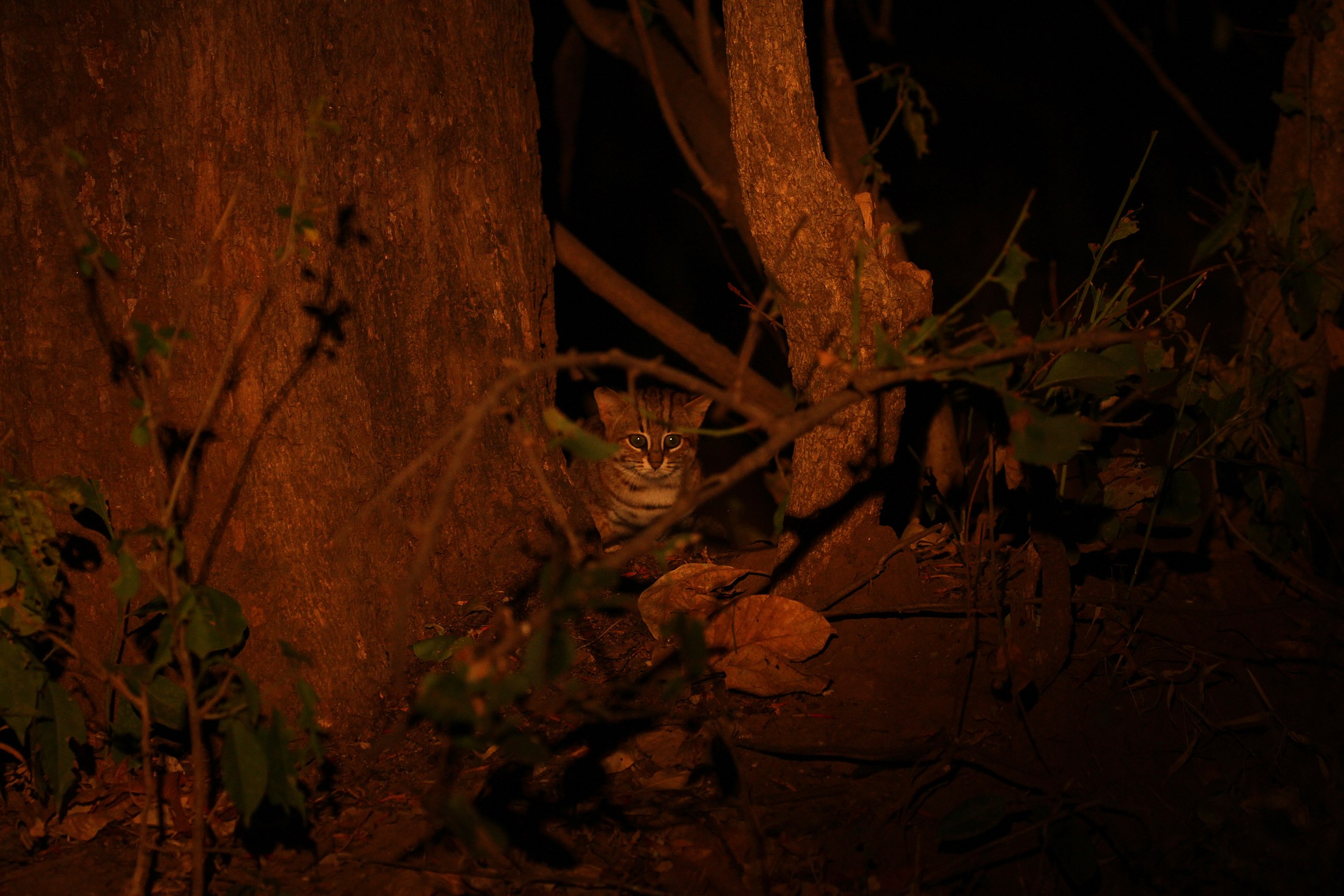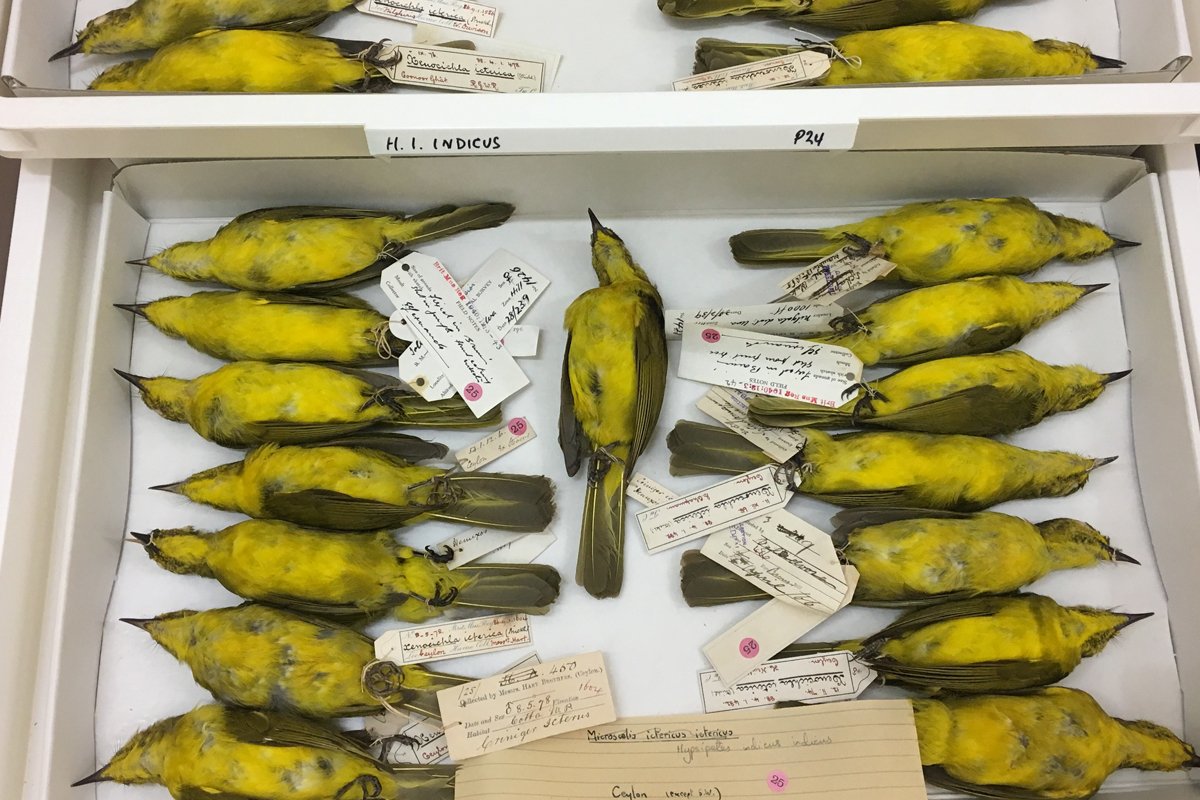
- A recent tracking study has found that Montagu’s harriers avoid crossing the Himalayas directly on their migration route, instead choosing a longer western detour that adds over 1,200 kilometres.
- This detour offers better flying conditions and crucial stopover sites such as the Thar Desert and the Amu Darya floodplains for rest and refuelling.
- As these grasslands and open ecosystems are gradually disappearing, this finely tuned migratory path, and the species that depend on it, face an uncertain future.
Every year, Montagu’s harriers — slim, graceful raptors with striking wingspans — journey thousands of kilometres between their breeding grounds in Central Asia and their winter homes in India. But instead of flying the shortest possible route, which goes through the Himalayas, these birds take a longer, winding path around the mountain range which adds about 1,245 km to their journey.
A five-year satellite tracking study now shows that this detour is both deliberate and surprisingly efficient. “Previous monitoring studies have found large congregations of these species in Tal Chhapar in Rajasthan and Velavadar in Gujarat in the autumn season. However, the tracking data revealed a surprising pattern: after detouring westward to avoid the Himalayas, the birds made a significant eastward turn across Kazakhstan to reach breeding sites near Lakes Balkhash, Alakol, and Zaysan in eastern Kazakhstan, adding considerable distance to their overall migration,” shares Arjun Kannan, lead author of the study, who is affiliated with the Manipal Academy of Higher Education, and the SMS Foundation Centre for Biodiversity and Conservation at the Ashoka Trust for Research in Ecology and the Environment (ATREE), Bengaluru.
A high-altitude obstacle
Migrating birds often face tough choices. While shorter routes save time and energy, they can also involve risky terrain, poor weather, or a lack of food. In the case of the Himalayas, averaging around 4,500 m in altitude, the dangers are many: freezing temperatures, low oxygen, unstable winds, and limited soaring conditions for birds that rely on thermals to glide long distances. These birds use rising columns of warm air (called thermals) to gain altitude and glide with minimal energy, rather than flapping their wings continuously.

For Montagu’s harriers in particular, a species that alternates between flapping and soaring flight, and rarely flies above 4,000 m, making a direct flight across the Himalayas is nearly impossible. To find out how they overcome this challenge during migration, researchers fitted six harriers (four males and two females) with lightweight satellite tags, while another four birds (one male and three females) were fitted with GPS-GSM tags from 2016 to 2020.
Trapping the harriers was by far the most challenging part of the study. The researchers used mist nets and a decoy Indian eagle owl to lure the birds near their roosting sites, as harriers are known to mob potential predators like owls. “One season, we spent nearly 60 days in the field, and managed to trap and tag just a single bird. In many cases, the harriers simply ignored the decoy. When only a few birds were present, they were especially cautious and avoided the owl,” says Kannan. The data collected from nine of them (one tag failed early) revealed a striking pattern: instead of attempting a direct crossing, the birds migrated via a western detour, circumventing the Himalayas but crossing over the western stretches of the Hindu Kush range. Remarkably, they followed this same detour both on their way south in autumn and on their return journey in spring.
Why the long way makes sense
To understand what made the birds chose this route, researchers used principles from optimal migration theory (Alerstam’s model) to compare the detour with a hypothetical straight-line path over the mountains. They analysed elevation, wind conditions, and vegetation cover (using satellite-based NDVI, or “greenness”).
The detour route — about 1,245 km, or 27% longer than a direct flight — actually turned out to be the smarter choice and more energy efficient. The extra distance helped the birds avoid the high, harsh conditions of the Himalayas and instead fly through easier, safer terrain. “They’re avoiding a massive mountain wall (the Himalayas), which stretches roughly 700 km. Instead, the detour takes them through open natural ecosystems, where they may be using a fly-and-forage strategy,” says Kannan.
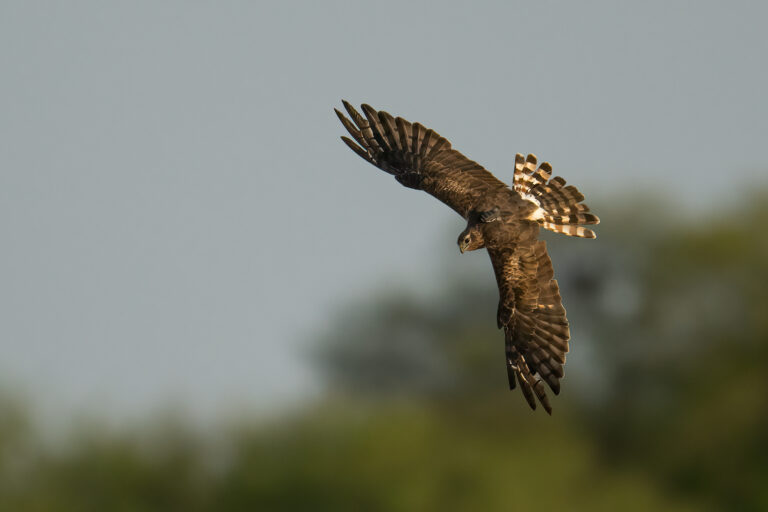
The study identified two key stopover sites — northwestern India’s Thar Desert, and the Amu Darya floodplains in Afghanistan. Thanks to seasonal rains, these areas offer bursts of vegetation and insect life, making them crucial pit stops for the hungry raptors. “The Thar Desert appears especially important for refuelling. The harriers feed heavily on resident grasshoppers, other insects, and perhaps even lizards. After breeding season, many birds would be exhausted and many would be inexperienced first-year juveniles. These refuelling sites can be essential for their survival,” says Kannan.
Interestingly, while wind patterns influence migration routes for many bird species, it did not play a major role for Montagu’s harriers. Although tailwinds sometimes helped speed their travel, the birds also faced headwinds or crosswinds during both legs of their journey. Still, the study found that they consistently followed the same detour.
Why this matters for conservation
Montagu’s harriers are declining in India, and the reasons are still unclear. This new study offers an important clue: it maps, for the first time, the full migratory route of these birds. It reveals how their survival hinges on a string of locations across their entire migration journey, not just where they breed or winter.
“Migratory birds thrive due to a network of interconnected sites across their full annual cycle where they breed, refuel and winter. It is embedded into their genetics. The loss of [these] sites can have carry-over effects, eventually leading to a slow wipe-out of populations,” says Kannan.
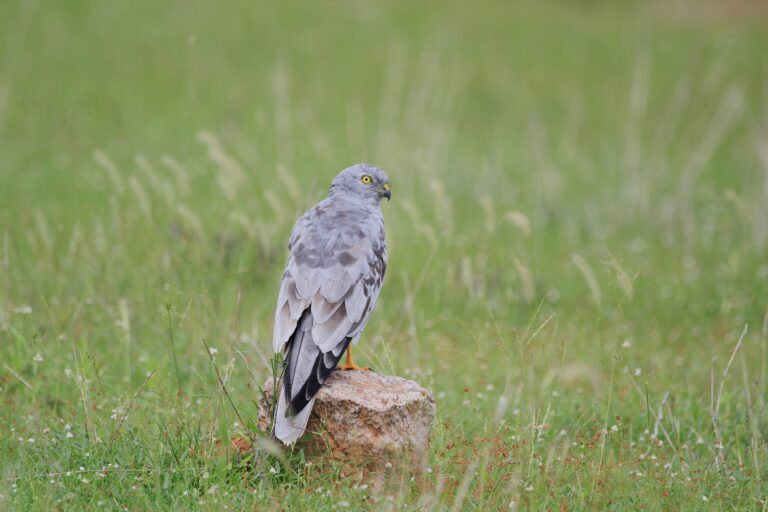
The western circum-Himalayan corridor used by Montagu’s harriers is particularly fragile. Much of it passes through open ecosystems that receive little conservation attention. The loss of grasslands and other natural habitats, especially in regions like the Thar Desert, could make this carefully evolved migratory path unviable. Shifting further west isn’t an alternative: it would make the already long detour even longer, potentially exceeding the birds’ energy limits.
What’s more, this corridor forms a part of the Central Asian Flyway, a major migration route used by many bird species. “A number of raptors such as steppe eagles, imperial eagles, Egyptian vultures, and spotted eagles might be using these routes. A handful of recent tracking studies have shown this. But we only have information about large bird species. Many passerines, such as larks, stonechats, and starlings, might also be using this route to migrate in and out of the Indian subcontinent. Unfortunately, we don’t have accurate data on these smaller species due to a lack of tracking studies,” says Kannan.
Understanding the movements of these smaller passerines is crucial, not just for their own conservation, but because they are also prey for the larger raptors. The study’s authors hope their findings will guide future conservation policy and land-use planning across India and Central Asia. “Conservation is often hampered by lack of understanding of bird migration and movement at a fine scale. It is important to track more species along the Central Asian Flyway to identify these networks of connected sites and work toward conserving at least some of them,” adds Kannan.
Read more: Understanding the elevational movements of Himalayan birds to improve conservation efforts
Banner image: Montagu’s harriers alternate between flapping and soaring flight, and rarely fly above 4,000 m. Image by Thalavaipandi.










